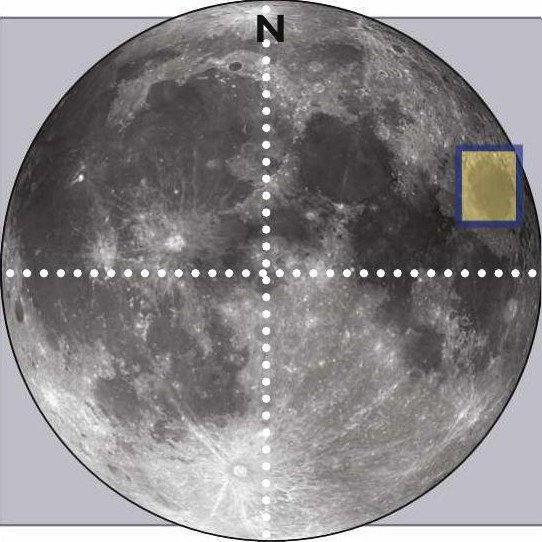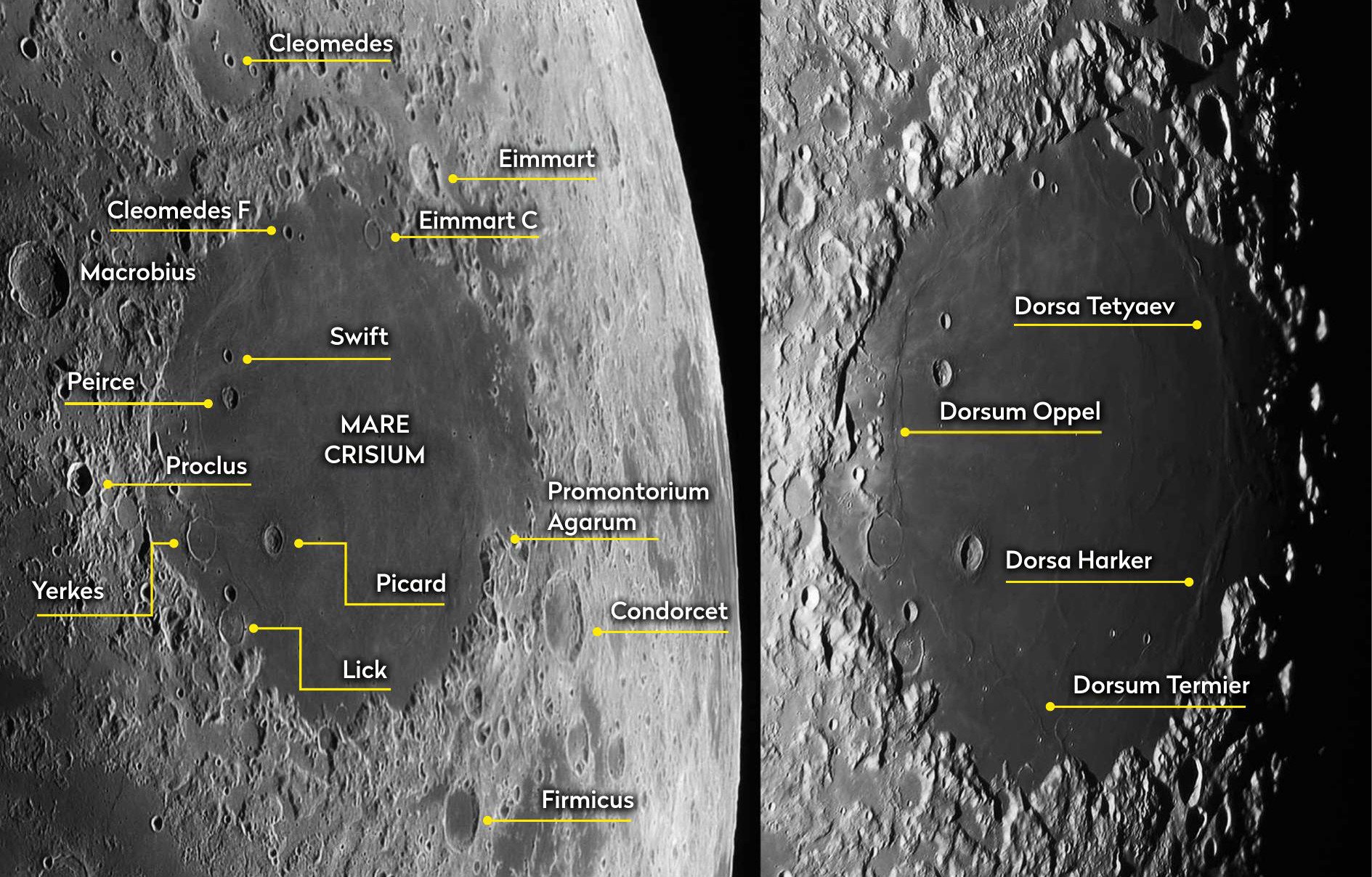May’s top lunar feature to observe
Mare Crisium

Type: Lunar sea
Size: 420 x 600km
Longitude/latitude: 59.1° E, 16.2° N
Age: Older than 3.9 billion years
Best time to see: Three days after new Moon (22–24 May) or two days after full Moon (6–8 May)
Minimum equipment: 10x binoculars
As lunar seas go, Mare Crisium, the Sea of Crises, is unique in that it’s isolated with no direct connection to any other sea on the lunar surface. From Earth it looks heavily foreshortened, appearing as an ellipse which you would think looks circular from above. However, it doesn’t. If you were able to view it from above, its dark lava floor would measure 420km north to south and 600km east to west, the long axis of its oblate shape undoing some of the effect of foreshortening. Basically, if it were circular, it would appear substantially narrower from Earth.
It’s an ancient sea over 3.9 billion years of age. It appears near the Moon’s northeast limb and is a feature that rather defines the appearance of the Moon – a large, dark oval, easily visible to the naked eye. The most common views of the Moon are in the evening sky and this is when Mare Crisium is most prominent. Even with a casual glance, your brain registers the dark oval of this superb mare. This prominent feature is often the undoing of poorly researched movies, which either place it in the wrong position or don’t show it at all in their evening view of the Moon.
Mare Crisium is a large, dark oval, easily visible to the naked eye
The surface of the mare under direct illumination looks pretty flat. Only a handful of craters adorn the surface, confined to the edge regions. The most intrusive is 23km Picard, the centre of which is 98km from the nearest of Crisium’s shores. Picard has an age range of 1.1–3.2 billion years, but looks quite youthful, with a sharp, almost circular rim and a sublime interior of concentric terraces leading to a flat floor. A low central mountain (perhaps hill is a better term) complex covers a large section of this floor.
Closer to the western shore are two superb examples of flooded craters: 36km Yerkes and 31km Lick. Yerkes has a complete rim surrounding a smooth lava-filled floor. The remains of its central mountain complex can be seen poking above the surface at the crater’s centre. Lick’s rim is open to the north, its floor occupied by a curious area of criss-crossing rilles.

North of Picard is 18km Peirce, another well-preserved, sharp-rimmed crater. Peirce and Picard have been described as the eyes of a hedgehog, Crisium the body and the elevated mountainous western mare border the mouth. It’s worth taking a lot of time examining Crisium’s edge as it contains numerous high-altitude cliffs, mountains and valleys. In addition, the apparently smooth floor is covered in beautiful examples of wrinkle ridges, best seen when the terminator is nearby.
Just to the west of Crisium is a problem feature for lunar imaging, the 28km ray crater Proclus. The ejecta rays from this feature blast towards the east, creating a distinctive pattern across Mare Crisium. It’s a problem because Proclus itself is very bright and causes issues with saturation level control when taking photos of the lunar surface.